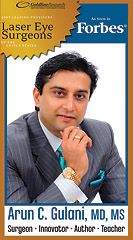
Perils of Vaping, the New Craze - Part I

Have you seen that classy-looking TV commercial on your TV screen lately on vaping? What happened to the ban on ads on tobacco products? I guess “vaping” is not considered a banned product anymore (?) and somehow the new companies marketing the product have been able to influence the TV channels. Clearly, they are overstepping the boundaries of social responsibility.
Recently, one of my middle-aged patients came to our community free clinic and announced triumphantly, “Doc, I quit cigarettes as you have been asking. Instead, I am doing up some vaping … it feels so good … that’s okay, right? This is the best way to replace my cigarette habit, they telI me … Aren’t they harmless?”
“Not so, I am afraid,” I said with a touch of displeasure. This man who has no money even to buy even his basic drugs for hypertension and diabetes is spending so much for his new habit. “Well, it’s just as bad, Peter. Recently, even deaths have been reported after vaping, so please … quit right now,” I added somewhat emphatically.
You know what I am talking about. First it was the e-cigarettes - the electronic nicotine delivery systems, battery-operated devices, that people use to smoke and inhale (vaping) and emit large clouds of smoke. This typically contains nicotine (although not always), flavorings and other chemicals. The e-cigarette was introduced as a way to quit smoking of regular cigarettes and was touted as safe. Prominent billboards advertising this product started appearing along all the major roadways in every town. It was meant to be the safe smoking alternative but soon it became the new epidemic, especially among students.
When reports started appearing about the harm produced by e-cigarettes, the manufacturers switched to the trendier vaping technique that uses a finely-crafted and pen-shaped little gadget that is appealing, easy to carry and looks fashionable. Juul Labs is one of main companies that makes it and it’s even called ‘juuling’! There are many other companies such MOJO, blu and NJOY who are into making pens. As soon as the new vaping pen came into the market, it seems to have gone viral! And now it has become “cool to vape a juul” among the teenagers. Often, I see youngsters at parking lots, mall entrances and other places hanging out and enjoying a vape together!
Apart from the popular e-cigarettes and now the Juul pens, there are e-pipes, e-hookah and e-cigars for your smoking, or shall we say “vaping,” pleasure. And many other companies like Innokin DV Pod System, Lost Vape Orion Q and Aspire Nautilus AIO are marketing their own vaping pens. Looks like the industry is evolving rapidly and even some financial firms have started recommending these companies for investment purposes! Can you believe that?
All these Electronic Nicotine Delivery Systems, or ENDS, are designed to deliver nicotine in vapor form that is inhaled. And nicotine is a powerful addictive agent with a lot of harmful effects on the body. Many take up the habit of vaping hoping to replace their addiction to regular cigarettes and that’s what the manufacturers are popularizing. Not so. You are only replacing one bad habit with another on.
According to the Food and Drug Administration, “the use of electronic cigarettes among high school students nationwide is up 78 percent in the past year. The latest Florida Youth Tobacco Survey, which tracks indicators of tobacco use and exposure to secondhand smoke among middle and high school students, shows that one in four high school students use electronic vaping. Florida is significantly above the national average.” The Surgeon General recently declared "e-cigarette use among youth has become an epidemic." Today's vaping epidemic is similar to the polio epidemic of the last century. And vaping shops are springing up everywhere with spectacular electronic billboards along the major roadways that cannot be missed as you drive by.
Please understand nicotine in tobacco as in cigarettes, e-cigs and vape pens are all addictive and that’s the reason for the inability to quit once you get hooked on it. Nicotine is an insecticide and quite harmful. There are significantly more children now inhaling nicotine than 20 years ago.
To be continued …
M.P. Ravindra Nathan, M.D., is a cardiologist and Emeritus Editor of AAPI Journal. For further reading, “Second Chance - A Sister’s Act of Love” by Dr. Nathan from Outskirts Press, can be found at www.amazon.com
EYE CARE
U.S. FDA approves 1st TRIFOCAL Lens for Cataract Surgery

Cataract! So you received this diagnosis from your eye doctor and are left puzzled and depressed (who wants to be reminded of our continued aging process). You are further confused when they tell you it is “just starting” or “small”. Questions whizzing in your mind, what is “small,” how big should it become? Should we let it become ripe first?
A cataract is not a disease; most commonly, it is the clouding of our clear natural lens with age. In other words, everyone who lives long enough will need cataract surgery eventually. Radiation exposure, steroids, diabetes and eye trauma can accelerate their development. Cataracts are the most common age-related eye condition and the leading cause of preventable blindness. Twenty million people in the U.S. age 40 and older have cataracts. Cataracts are treated by removing the eye’s cloudy natural lens and surgically replacing it with an intraocular lens or IOL. More than 98 percent of cataract surgeries are considered successful, and patients typically can return to their normal routines within 24 hours.
The Food and Drug Administration (FDA) approved the first and only trifocal lens for U.S. patients undergoing cataract surgery – the PanOptix®Trifocal Intraocular Lens (IOL) which is capable of delivering exceptional combination of near, intermediate and distance vision while significantly reducing the need for glasses after surgery.
More than four million cataract surgeries are performed each year in the U.S., which is projected to increase by more than 16 percent by the end of 2024.
In my previous Khaasbaat columns I have explained presbyopia as a common, age-related vision condition in which people have difficulty focusing on things up close. It involves the gradual loss of the eye’s ability to focus on close objects, such as smart phones, computers, books and menus. Almost everyone will experience presbyopia to some degree as they age, especially as people enter their 40s and continue to worsen into their 60s.In the U.S., an estimated 112 million people experience vision issues due to presbyopia – a number that’s expected to continue to rise. The condition is not a disease, so it cannot be cured; however, there are safe and effective ways to correct presbyopia, including eye glasses, contact lenses or refractive surgery.
This Trifocal IOL is used to focus images clearly onto the back of your eye (retina) to allow clear vision after the cataract removal. In addition, the center of the lens allows for better near (reading) vision and intermediate (computer work) vision versus what a monofocal lens would provide.
Some potential side effects such as glare and reduced contrast sensitivity can occur. These may impact driving at night or completing tasks in low lighting conditions like at night or in fog, or in a dimly lit room after surgery as compared to before surgery.
I have explained astigmatism in my previous columns too, which is from the football shape of your cornea. A special category of this Trifocal lens can also correct astigmatism.
Now, let’s sum this up and understand the reason for so much excitement in our profession. Most cataract patients are obviously over the age of 40 and hence have presbyopia (difficulty reading) and most cataract patients have astigmatism as part of their glasses prescription. So, finally we have a lens implant that can correct all of these problems with one, single cataract surgery.
Having used this technology abroad and performed one of the first of these Trifocal Toric Lens cataract surgeries in Florida, it was a pleasure for me to see my patients’ reactions next day. In fact, we honored a veteran to be the first to receive this lens and he came in wearing his military uniform next day (after 60 years) as a gift for my birthday. Surely a future direction for the world of cataract surgery.
Find out from your eye doctors if you are a candidate for this Trifocal lens implant technology and “congratulations if you have a cataract!”
References: Market Scope, Centers for Disease Control and Prevention
Arun C. Gulani, M.D., M.S., is director and chief surgeon of Gulani Vision Institute in Jacksonville. He can be reached at [email protected] or visit www.gulanivision.com